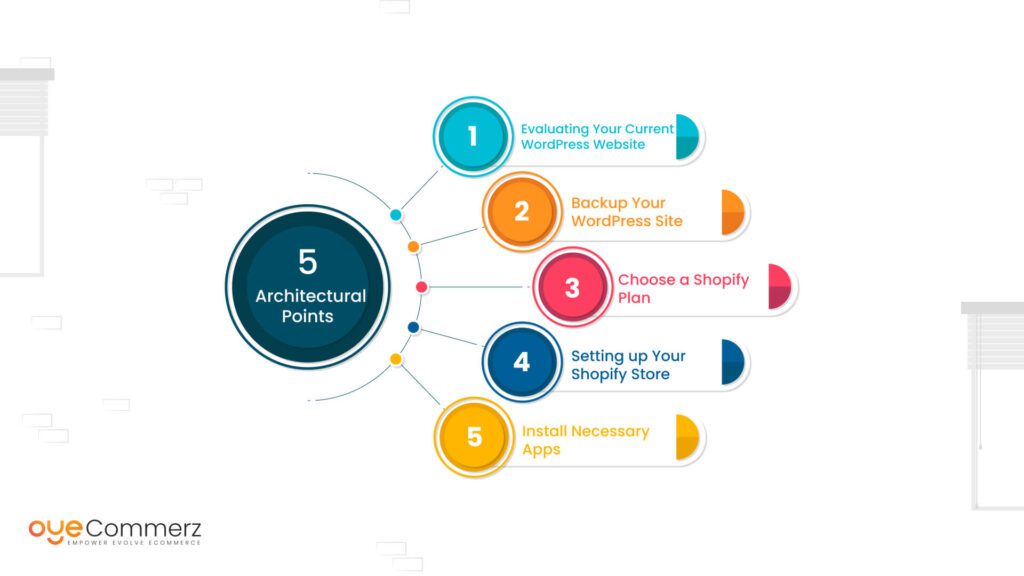In the ever-evolving landscape of digital commerce, choosing the best system is essential for your brand’s success. If you’re presently using WordPress and thinking about a migration to Shopify, you’re not the only one. Countless businesses are shifting to take advantage of Shopify’s robust capabilities, ease of use, and growth potential. This guide will take you through the process of migrating from WordPress to Shopify seamlessly, making sure that you achieve your online retail potential.
Why Migrate from WP to this platform?
Before exploring the migration procedure, it’s crucial to realize why this shift can be helpful for your online store:
User-Friendly Interface: Shopify provides an straightforward interface that streamlines store management, making it easier for non-technical users.
Flexibility: As your brand grows, Shopify can support higher visitors and sales without compromising performance.
All-in-One Solutions: Shopify comes with pre-installed resources for search engine optimization, analytics, payment processing, and more, reducing the requirement for several plugins.
Robust Protection: With Shopify, you get access to strong security protocols that secure sensitive customer data.
Steps for a Effortless Migration
Migrating your digital shop from WordPress to Shopify includes several phases.
Here’s the way to facilitate a successful transition:
Outline Your Migration Approach
Kick-off by mapping out your migration blueprint. Identify which elements of your current site you want to migrate, such as:
Inventory information
Customer information
Transaction records
Posts
Choose the Appropriate Migration Option
Based on your preferences, select a migration package that aligns with your eCommerce goals. Professional services provides several options:
Entry-Level Plan: Perfect for small stores with limited products.
Mid-Tier Plan: Suitable for growing businesses with moderate Shopify plugin alternatives requirements.
Comprehensive Solution: Best for larger stores demanding broad customization.
Save Your Content
Before starting the migration, ensure that you have a comprehensive copy of your WordPress site. This task is crucial in case anything goes awry during the transfer.
Retrieve Your Information from WordPress
Use extensions or manual methods to export essential data from your WordPress site:
Items
Clients
Sales records
Articles
Migrate Content into Shopify
After you have your information extracted, use Shopify’s migration apps or external apps to migrate your information into your updated store. Verify that all information is correctly structured and arranged.
Adapt Your Shopify Site
Following migrating content, tailor your Shopify site’s theme to reflect with your brand identity. Think about engaging a specialist if you need advanced customization.
Configure Payment Gateways and Shipping Options
Arrange Shopify for order processing billing solutions and delivery choices in Shopify to facilitate a seamless purchase experience for customers.
Apply SEO Guidelines
To maintain your SEO performance during the change:
Use 301 link updates from existing URLs to migrated ones.
Refresh descriptions.
Optimize media and text for search engines.
Test Your New Shop
Ahead of publishing, thoroughly review your migrated platform. Look out for any errors, transaction errors, or untransferred content.
Launch Your Platform
After everything is in place, it’s the opportunity to launch! Announce the transition to your customers and encourage them to explore the updated capabilities of your Shopify store.
Post-Migration Support
Even after releasing your Shopify store, continued assistance is key. Think about engaging service providers who can guide with:
Site maintenance
Customer engagement
Enhancing features
Conclusion
Migrating from WP to Shopify can be a transformative decision for your online retail. By using this guide and utilizing professional services like those offered by OyeCommerz, you can achieve a smooth transition that boosts your digital storefront. Embrace the change and unlock the advantages of Shopify today!
